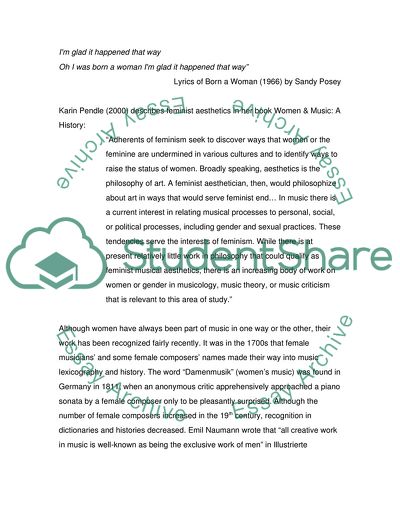Cite this document
(“Feminist Theory in Music Essay Example | Topics and Well Written Essays - 2500 words”, n.d.)
Feminist Theory in Music Essay Example | Topics and Well Written Essays - 2500 words. Retrieved from https://studentshare.org/sociology/1545818-feminist-theory-in-music
Feminist Theory in Music Essay Example | Topics and Well Written Essays - 2500 words. Retrieved from https://studentshare.org/sociology/1545818-feminist-theory-in-music
(Feminist Theory in Music Essay Example | Topics and Well Written Essays - 2500 Words)
Feminist Theory in Music Essay Example | Topics and Well Written Essays - 2500 Words. https://studentshare.org/sociology/1545818-feminist-theory-in-music.
Feminist Theory in Music Essay Example | Topics and Well Written Essays - 2500 Words. https://studentshare.org/sociology/1545818-feminist-theory-in-music.
“Feminist Theory in Music Essay Example | Topics and Well Written Essays - 2500 Words”, n.d. https://studentshare.org/sociology/1545818-feminist-theory-in-music.


